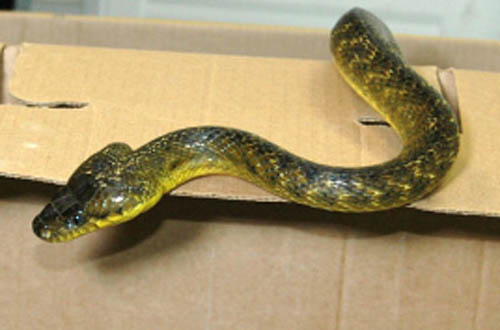Brown Tree Snake Program

The invasive brown tree snake was first detected on Guahan (Guam) in the 1950s. Native to Papua New Guinea and northern and eastern Australia, it was introduced accidentally in imported cargo, most likely by the US Navy. It has since had devastating effects on the island's local birds and lizards, driving 10 of Guahan's 12 native bird species to local extinction. It also attacks small pets and livestock and has caused millions of dollars in damage by shorting out electrical power lines and transformers.
The Division of Fish and Wildlife Brown Tree Snake Program (BTS) works to keep the brown tree snake out of the CNMI by creating and managing barriers on Saipan and Tinian. Currently, there are no barriers on Luta (Rota) due to lack of funding. Barriers include inspections of transportation vessels, cargo, and warehouses where arriving cargo is stored, as well as traps along seaport and airport boundaries. BTS personnel train snake-detecting dogs that can sniff out snakes arriving in cargo.
The brown tree snake is light to dark brown, with distinctive shadow-like markings, and large eyes with oval pupils, a large head, prominent eyes, and a long, thin body. The snake ranges in length from about 18 inches (45 cm) to 10 feet (3 m) and its long oval-shaped eggs are a little over an inch in length.
The brown tree snake is mildly venomous and not dangerous to adults, but if a small child is bitten they should have immediate medical attention.
If you see a brown tree snake, kill it and then call 28-SNAKE (287-6253). Report any snake sightings immediately.